Why Khan Noonien Singh Casts A Shadow Over The Entire Star Trek Universe
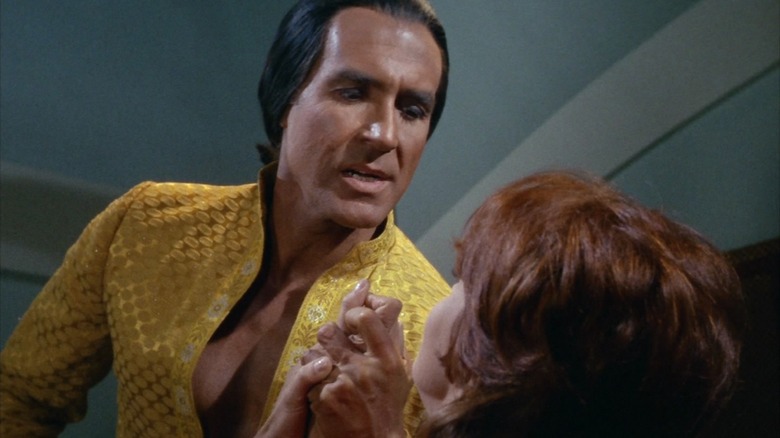
According to its own mythology, the utopia of "Star Trek" had to be earned. Sometime between the present day and the franchise's idyllic future, several destructive wars will break out, causing humankind to experience a reckoning. Recall that Trek creator Gene Roddenberry was born in 1921, so he had very sharp memories of World War II and all of the horrors it produced. Roddenberry came to feel that humanity ought to learn from such horrors, and began to depict war — at least in "Star Trek" — as humanity's "low point." Once faced with self-destruction, Roddenberry felt, humans would eventually set themselves on the path to healing and recovery.
It was antithetical, then, for Roddenberry to depict the character of Khan Noonien Singh ( Ricardo Montalbán ) the way he did. In the "Star Trek" episode "Space Seed" (February 16, 1967), the Enterprise rescues Khan from a cargo ship called the Botany Bay. Khan and several of his compatriots were in cryogenic sleep, having fled Earth about 200 years previous, fleeing extradition. Khan, you see, was one of Earth's most famous dictators during the Eugenics Wars. He had conquered most of the planet with the aid of his genetically enhanced retinue. Khan was confident, forthright, and convinced of his innate superiority, qualities that — bafflingly — Kirk (William Shatner), Spock (Leonard Nimoy), and the ship's historian Lieutenant McGivers (Madlyn Rhue) greatly admired.
"Star Trek" may have been a pacifist show at its heart, but too often the characters stood in unironic awe of violent military commanders. McGivers especially folded to his charms. It was a little gross.
Although Khan left the show after "Space Seed," he would return in cinematic form. From 1982 onward, Khan would alter "Star Trek" forever, both for better and for worse.

The impact of Khan
In "Space Seed," Khan, seeing an opportunity to begin his old nation-conquering habits again, tried to take over the Enterprise. Kirk and Spock outwit him, knock out his genetically enhanced retinue, and wrest back control of the ship. Rather than punish Khan for his malfeasance, however, Kirk gives the villain an ultimatum: can he create the ideal society he's always dreamed of on an uninhabited planet somewhere? Khan accepts the challenge, and he is left on a planet called Ceti Alpha V to build his masterpiece society. Khan was out of sight and out of mind.
Until the release of "Star Trek II: The Wrath of Khan" in 1982. In the film, it was revealed that shortly after Khan arrived, Ceti Alpha V experienced a massive natural cataclysm that transformed it into an inhospitable desert world. For decades, Khan and his retinue lived huddled in a ship, barely surviving, growing increasingly preoccupied with getting revenge on Kirk. Over the course of "Star Trek II," Khan commandeers a Starfleet vessel called the U.S.S. Reliant and goes hunting for Kirk, now an admiral. Kirk, meanwhile, is going through a midlife crisis wherein he finally faces the consequences of several forgotten transgressions. Khan is the personification of Kirk's absent-mindedness; he never bothered to check in on Khan.
Popular opinion typically dictates that "Star Trek II: The Wrath of Khan" is the best of the 13 extant "Star Trek" movies. Montalbán brings a glorious, melodramatic oomph to his performance that thrills audiences and handily balances Shatner's occasional tendency to play Kirk as larger-than-life. He is a great "Star Trek" villain.
But then, that's a problem. Since when was "Star Trek" about "heroes" and "villains"? Since 1982, it seems. Ordinarily, Trek is more morally nuanced than that.
Moral absolutism
Throughout its history — and throughout the 1990s in particular — "Star Trek" writers have often bent over backward to present dramas with a palpable element of moral ambiguity. It's rare that a character will be presented as wholly heroic or villainous, as that's not true to life; heroes and villains don't exist. Only people. People of all walks may commit acts of heroism, or even acts of villainy, all the while convinced that what they're doing is right and correct. "Star Trek" analyzes human values and philosophies, and attempts to find a careful middle ground within a matrix of diplomacy and pragmatism. Justice and morality are more nuanced than "good" vs. "evil." In Trek, conflicts are rarely solved by a hero besting a villain in violent combat. That's "Star Wars" stuff.
But, it cannot be denied that such conflicts are exciting, easy to consume, and imminently cinematic. On TV, Trek could afford a slower pace and episodes that centered on conversation and philosophy. On the big screen, however, everything needs to wrap up more dramatically and tidily. As such, most of the "Star Trek" movies are a lot more action-forward than anything on TV. And when the franchise discovered the effectiveness of Khan as a "Star Trek" supervillain, they hit a groove. A charismatic villain who wants personal revenge on a Starfleet captain? Bully! Let's do that as often as we can get away with. Also, more shooting and yelling and space battles and explosions.
By the early 1990s, a fan consensus began to form around the first six Trek movies, and many agreed that "Wrath of Khan" was the best. The franchise soon began to imitate it, looking for their next Khan.
The revenge quartet
It's telling that four Trek films in a row — "Star Trek: Nemesis," the 2009 film, "Star Trek Into Darkness," and "Star Trek Beyond" — all centered on vengeance-obsessed villains. The third season of "Star Trek: Picard" also retreaded the concept. In "Nemesis," Shinzon (Tom Hardy) wanted to kill Captain Picard (Patrick Stewart) because he was cloned from Picard's DNA. Shinzon's ship and the Enterprise-E ended the film facing off in a nebula, just like in "Wrath of Khan." In the 2009 film, a Romulan named Nero (Eric Bana) sought revenge on Spock. In "Darkness," Khan was resurrected in a parallel universe form, played by Benedict Cumberbatch. He still wanted revenge. "Beyond" was about Kroll (Idris Elba) a man who came to hate being abandoned by the Federation — just like in "Wrath of Khan."
And "Picard," made 41 years after "Wrath of Khan," still followed a lot of the same beats. Vadic (Amanda Plummer) was a dark, vengeful villain with an overpowered ship. "Picard" even went so far as to borrow music cues directly from "Khan" to invite comparison.
Again: a supervillain is a dramatically satisfying archetype, especially in your typical Hollywood melodrama. Their villainy is easy to understand, and the means to stop them clear (usually violence). Seeing a bad guy get murdered is cathartic. But seeing Khan as a "villain" was the wrong lesson to have taken from "Star Trek II." In a more sane Trek plot, Kirk would find a way to give Khan what he wanted and talk his way out of the problem. The villains in all the above movies have legitimate grievances, and TV "Star Trek" would spend more time addressing and repairing said issues.
Khan's shadow is long, and his legacy is simultaneously fun and very, very unfortunate.
Star Trek: Khan Noonien Singh's Last Words Are Deeper Than You Think
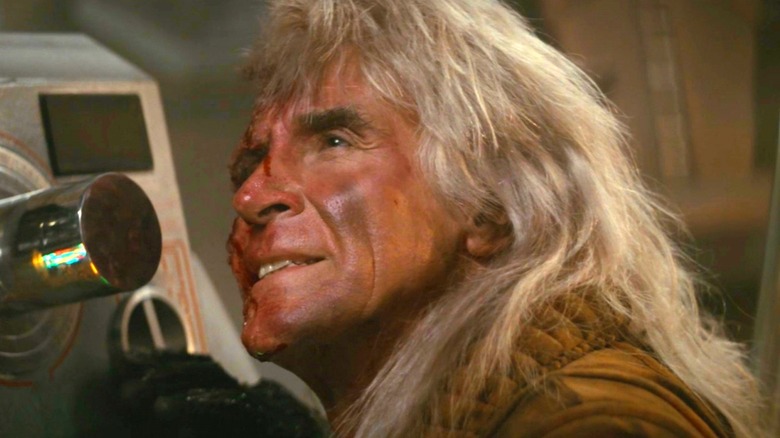
Classic Star Trek villain Khan Noonien Singh (Ricardo Montalbán) has had a long-lasting legacy that continues into the current canon. Decades after he died in one of the best Star Trek films , "Star Trek II: The Wrath of Khan," the Federation is still profoundly affected by his misdeeds. This is in part because he pushes for genetic engineering, but it's also a testament to how charismatic he was as a character. After being an episodic villain in "Star Trek: The Original Series," he returned to wreak havoc on Admiral Kirk (William Shatner). Khan's quest for vengeance leads to his demise, but not before his famous last words.
"No! No! You can't get away ..." Khan says to the Enterprise as it flies away. "From Hell's heart ... I stab at thee. For hate's sake, I spit my last breath ... at thee." Star Trek has long leaned into taking inspiration from modern-day classics, and that is where Khan's final words come from. He is reciting "Moby-Dick," the Herman Melville epic about Captain Ahab's quest to destroy the titular whale. This ending is fitting for the film, as Ahab and Khan were both vengeful captains in their own right. While Ahab quested to kill his literal white whale, Khan went after his metaphorical one. Kirk was always the foe that got away. But Khan's farewell is about more than surface-level connections.
Khan is an epic figure
Like Captain Ahab, Khan is such a larger-than-life character that he has stood the test of time. "Star Trek: Strange New Worlds" focuses on the repercussions of Khan's effect on the world through the eyes of his descendant, La'an Noonien Singh (Christina Chong). Khan's devotion to genetically augmenting the human race defines him, and he never changes his mind. Similarly, Ahab is as vitriolic as he was when he first started hunting the whale. He fails to kill Moby-Dick and watches it destroy his ship and most of his men. Even so, he uses his final moments to curse the whale. He understands his fate, but wouldn't change anything. This is also the place that we leave Khan at the end of "Star Trek II: The Wrath of Khan."
After sustaining injuries on his ship, he shows no remorse for what he did. His actions directly cause Spock's (Leonard Nimoy) death and reaffirm he was only ever interested in world domination. He dies, cursing Kirk while he himself is the one who caused his downfall. He dies as he lived, full of hate. The tragedy of it all is that he could have turned back at any moment. But like Ahab, his fate was to be drowned by his own revenge.
- More to Explore
- Series & Movies
Who Is Khan Noonien Singh?
Highlighting One of Star Trek's Most Notorious Villains
StarTrek.com highlights one of Star Trek's most notorious villains, Khan Noonien Singh.

Star Trek: Strange New Worlds: Augments, Illyrians and the Eugenics Wars
Why first officer Una Chin-Riley was on trial, and how it links all the way back to Khan Noonien Singh.

Warning: Spoilers ahead if you haven't watched "Star Trek: Strange New Worlds" season 2, episode 2, " Ad Astra per Aspera ".
From original series two-parter "The Menagerie" to "The Next Generation" classic "The Measure of a Man", "Star Trek" has always loved a courtroom drama. "Ad Astra per Aspera" continues the tradition, as USS Enterprise first officer Una Chin-Riley (aka Number One) goes on trial.
Her crime? Nothing more than being an Illyrian, a species whose penchant for genetic modification puts them at odds with Federation laws preventing anyone from tinkering around with their DNA.
Una's predicament has its roots in the story of the infamously wrathful Khan Noonien Singh, and also ties into plotlines explored in "Deep Space Nine", "Enterprise" and "Picard". It's also certain to have further implications for "Strange New Worlds," so here's everything you need to know about Augments, Illyrians and the Eugenics Wars.
Why is Una on trial in "Strange New Worlds" season 2?

Simply because of who she is and where she comes from.
In season 1 episode "Ghosts of Illyria " confirmed that the USS Enterprise's highly respected first officer is an Illyrian, a species whose use of genetic modifications contravenes long-standing Federation laws. These rules would have prevented her from serving in Starfleet, so she's kept her heritage hidden throughout her career.
Although Captain Pike opted to keep Number One's secret when he learned the truth about her origins origins, someone else spilled the beans, leading to Una's arrest in season 1 finale 'A Quality of Mercy '.
During the trial, it was revealed that it was actually Una who'd reported herself to the authorities in the hope that her case might help the blinkered Starfleet authorities understand Illyrians a better. She also wanted her crew to know her for who she really was, and to finally feel safe. Her counsel, Neera Ketoul (a fellow Illyrian), successfully argued that Pike was effectively granting Una asylum from persecution by allowing her to remain on the Enterprise, and the charges against her were dropped.

Watch Star Trek: Strange New Worlds on Paramount+:
Essential (ads) - $4.99/mo or $49.99/yr
Premium (no ads) - $9.99/mo or $99.99/yr
What is an Illyrian?

Although Una looks human, Illyrians are a different species entirely, hailing from the Delphic Expanse that was also home to "Star Trek: Enterprise" antagonists the Xindi.
Rather than trying to adapt new worlds to suit their needs, the Illyrians use genetic modification techniques to adapt their bodies to new, often hostile environments – Una's augmentations give her superhuman healing abilities, as well as the ability to literally light up a room.
This penchant for fiddling around with DNA means that their appearance can vary greatly, ranging from the human-like Una, to subtly webbed hands and feet, and the sort of lumpy-foreheaded alien look that's a mainstay of the franchise.
Have we always known that Una is an Illyrian?

Number One’s first appearance in original "Star Trek" pilot "The Cage" (made in 1965) didn't tell us much (if anything) about her backstory, and there was little to make us suspect she was an alien – indeed, back then the ship's extra-terrestrial quotient effectively consisted of Mr Spock.
However, legendary "Trek" writer DC Fontana did allude to Number One's origins in non-canonical 1989 novel "Vulcan's Glory", where Pike explained that, "Some officers have a difficult time dealing with the fact that she is a genetically perfect being. On her planet, Illyria, excellence is the only criterion that is accepted."
This relatively obscure piece of "Trek" lore has subsequently been reinvented and retconned into official canon.
Why does Starfleet have an issue with Illyrians?
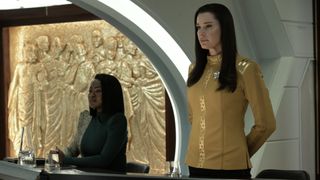
It's not so much the Illyrian people as their penchant for genetic modification, a practice that was made illegal in the wake of the Eugenics Wars that ravaged Earth in the late 20th century and early 21st century.
What were the Eugenics Wars?
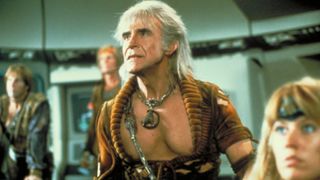
When a group of 20th century scientists successfully engineered a group of men and women who were stronger, faster and more intelligent than your average human, they didn't account for one important detail – these so-called Augments had a massive superiority complex that resulted in an unstoppable desire to conquer and subjugate ordinary homo sapiens. The most famous/infamous of these superhumans, a certain Khan Noonien Singh, came to rule a quarter of the Earth, across Asia and the Middle East.
"Trek" history is a little fuzzy on the subject of whether the subsequent Eugenics Wars were fought between the Augments themselves, or by ordinary humans looking to overthrow their GM overlords. Either way, we do know that millions of people died, and that much of the planet was laid to waste in a conflict that subsequently escalated into a fully blown World War III.
With Augments blamed and ostracized for the near-destruction of Earth, the authorities moved to ban all genetic engineering on humans – a resolution that remained in place for centuries.
When exactly did the Eugenics Wars take place?
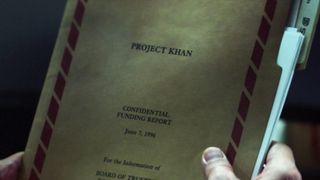
That's a good question. While various "Star Trek" movies and TV shows have alluded to the 21st century being a post-apocalyptic wasteland – and Khan's first appearance in original series episode "Space Seed" dated the Eugenics Wars between 1992-96 – this doesn't tally with "Star Trek: Picard" season 2's extended stay in a very normal 2024 or, indeed, the real world.
But we wonder if the "Trek" chronology might be going through a bit of subtle retconning to make the timeline a little more plausible. Data's "ancestor" Adam Soong pulling out a file labelled "Project Khan" (dated 1996) in the "Picard" season 2 finale certainly suggests Khan could have been born later than we originally thought – unless, of course, the file refers to a plan to replicate a whole new generation of superbeings from Khan's "superior" DNA.
And tweaks like this seem entirely justified as the franchise evolves – as regular ’90s scripter Ronald D Moore put it to Cinefantastique, "What looked like the distant future in 1967 [when 'Space Seed' was broadcast'] is not so distant any more. I don't blame them for not having the foresight to see that in 30 years this would be important in the series."
Are there any other Augments in "Star Trek" lore?
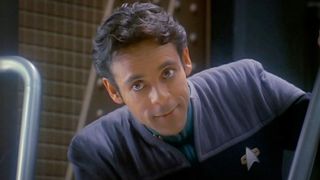
"Trek" has explored the implications of genetic manipulation on several occasions. The most famous example was arguably "Deep Space Nine" medic Dr Julian Bashir, who was shocked to learn that his father had played around with his DNA when he was a kid, with the aim of making him less of a disappointment. While Bashir Sr was never going to win dad of the year, the augmentations to his boy resulted in enhanced mental agility, super-fast reflexes and improved hearing. Despite the Federation's ban on such modifications, Bashir was allowed to remain in Starfleet when his dad agreed to go to prison for his crimes.
Related: Best Star Trek Deep Space Nine Episodes
"Enterprise" also ventured into GM territory, with a plot line about another of Data's ancestors, Arik Soong, set out to prove that Augments wouldn't automatically grow up to be bad 'uns like Khan.
Soong's work was later adapted by Klingons looking to make Augments of their own. Their plan backfired, however, proving lethal until Dr. Phlox engineered a cure that – conveniently for overall continuity – gave a group of Klingons the smooth-foreheaded appearance they had in the era of the original series. When Worf told his confused DS9 crewmates "We do not discuss it with outsiders" in classic flashback episode "Trials and Tribble-ations", this anomaly was what he was talking about.
And Una's shipmate, La'an Noonien Singh, is a descendant of Khan. She lives in fear that genetic modifications may suddenly manifest themselves, making her a danger to the Enterprise crew.
Join our Space Forums to keep talking space on the latest missions, night sky and more! And if you have a news tip, correction or comment, let us know at: [email protected].
Get the Space.com Newsletter
Breaking space news, the latest updates on rocket launches, skywatching events and more!
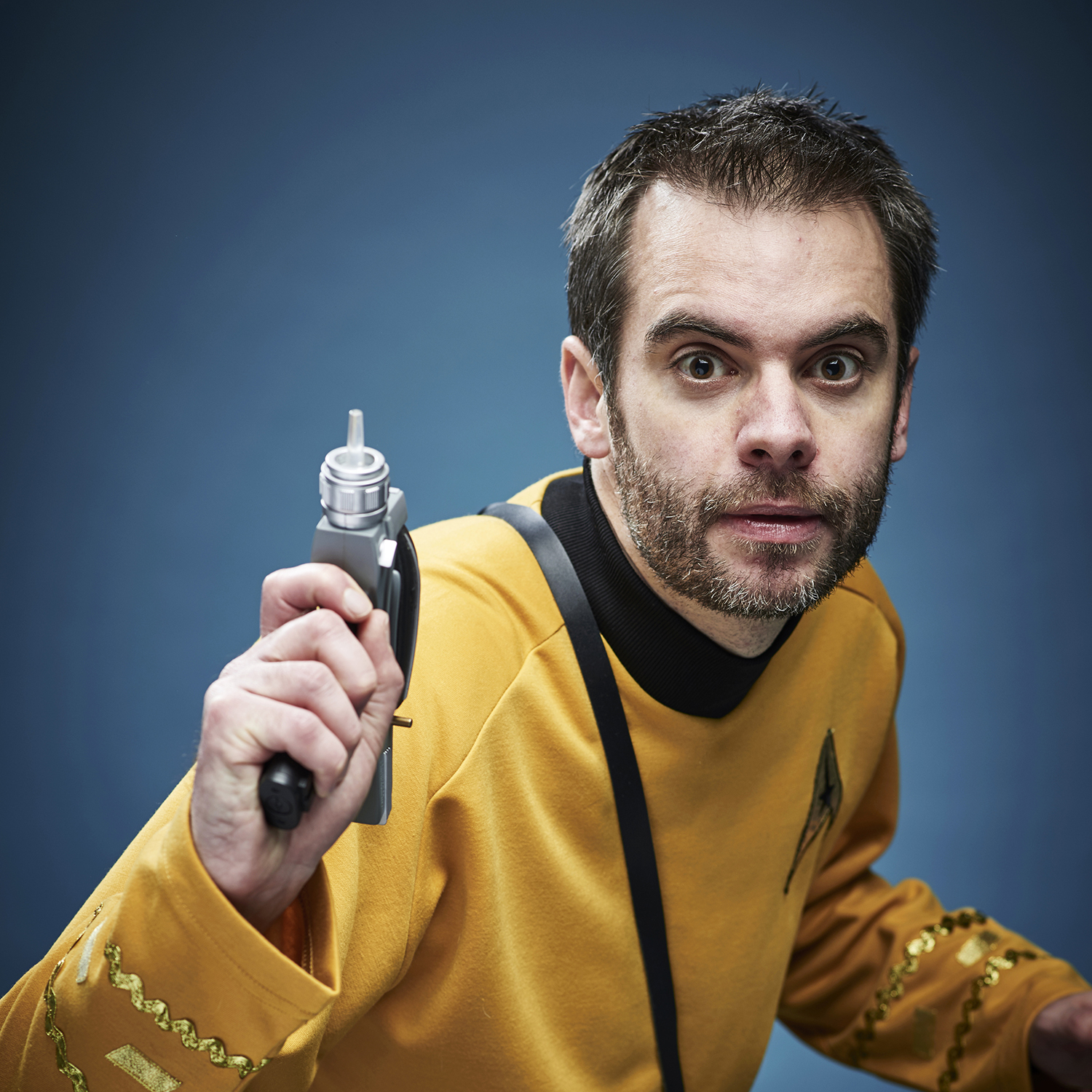
Richard's love affair with outer space started when he saw the original "Star Wars" on TV aged four, and he spent much of the ’90s watching "Star Trek”, "Babylon 5” and “The X-Files" with his mum. After studying physics at university, he became a journalist, swapped science fact for science fiction, and hit the jackpot when he joined the team at SFX, the UK's biggest sci-fi and fantasy magazine. He liked it so much he stayed there for 12 years, four of them as editor.
He's since gone freelance and passes his time writing about "Star Wars", "Star Trek" and superheroes for the likes of SFX, Total Film, TechRadar and GamesRadar+. He has met five Doctors, two Starfleet captains and one Luke Skywalker, and once sat in the cockpit of "Red Dwarf"'s Starbug.
This Week In Space podcast: Episode 107 — Mars Sample Return Blues
'Transformers One' 1st trailer unveils Optimus Prime and Megatron's shared history (video)
Cosmonaut Muhammed Faris, first Syrian in space, dies at 72
- Atlan0001 Star trek's 'Augmentee' territory = Star Wars' 'Jedi / Sith' territory. Reply
- View All 1 Comment
Most Popular
- 2 This Week In Space podcast: Episode 107 — Mars Sample Return Blues
- 3 Lego Star Wars Millennium Falcon (2024) review
- 4 Those magic minutes during April 8's solar eclipse brought me to tears
- 5 Everything we know about 'The Fantastic Four'
The Real Meaning of Khan's Wrath in Star Trek
This year marks an important anniversary as Trekkies celebrate the 45th anniversary of the broadcast of the original series episode "Space Seed" which first brought us Khan Noonien Singh...

A Trekkie since the days he watched reruns of the original Star Trek series from his own "captain's chair" in his livingroom, I am now a History professor at San Diego State University where I teach a class called "Star Trek, Culture, and History."

How Star Trek: Picard’s ‘Project Khan’ File Can Fix Its Biggest History Problem
The 'Project Khan' file seen in the season 2 finale of Picard could be the first step to fixing Star Trek's biggest history problem.
WARNING: The following contains spoilers for the season 2 finale of Star Trek: Picard, now streaming on Paramount+.
In Star Trek: Picard fans were introduced to yet another Dr. Soong who happens to look just like Data (or, more accurately, Brent Spiner the actor who played him). In the last scene we see of this character in the past, he’s holding a file called “Project Khan” dated 1996. While it might seem like a quick reference to Star Trek’s most infamous villain, it may actually be the first step to fixing the franchise’s biggest history problem.
The original series’ USS Enterprise encountered the Botany Bay spaceship adrift in the void in the 1967 episode “Space Seed.” There they met Khan Noonien Singh, played by Ricardo Montalban. In the briefing Spock gives to the crew, it’s revealed that from the years of 1992 to 1996, this genetically engineered superhuman—and a group of others just like him—took over the entire Eastern hemisphere and fought a bloody war that killed millions. After the war, he and the other augments were sent into space in suspended animation.
RELATED: Star Trek: Picard Complicates Earth's History with Vulcans
At the time when this was written, 1996 was three decades away. During the second wave of Star Trek storytelling, Khan’s reign came and went in the real world’s history. Yet, despite numerous Trek characters traveling back to our present since, the Eugenics Wars—which lead directly to World War III—have never been retconned. They still happened from 1992 through 1996 as far as the in-universe canon is confirmed. However, the Project Khan file Dr. Soong is looking at in the Picard finale is the first reference to the date specified in the original series since.
The next hard date we get comes from Star Trek: Deep Space Nine , episode “Past Tense.” Some characters are sent back to Earth in 2024, which is the same year Picard travels to. It’s just two years before the start of World War III. In Star Trek: First Contact , after an encounter with the Borg, the Enterprise travels back in time to the day before humans made first contact with the Vulcans. That date is April 4, 2063, which is “about 10 years” after the end of the third world war. So, that means the Eugenics Wars of the 1990s, allegedly the precursor to nearly 30-year World War III was separated from it by another 30 years.
When the original series prequel Star Trek: Enterprise aired, they did a few episodes about Khan’s fellows, now dubbed “augments.” This storyline was meant to address the inconsistency of how Klingons looked in the original series versus how they came to look (with advanced makeup effects). While it illuminated a lot about their creation and their connection to the sinister Soong family, it did not go into the war or the timeframe of when everything went down.
RELATED: Star Trek: Picard Reveals the History Between Q and Guinan
As is typical with these big “Star” franchises, in between installments they turn to their expanded universe to address these problems. Author Greg Cox wrote a trilogy of novels to help “fix” the Khan story, including how Khan knew Chekov in Star Trek: The Wrath of Khan , since Walter Koening hadn’t been cast when “Space Seed” aired. In these books, Cox takes a unique approach to the Eugenics Wars. While this book is not canon, it is a blueprint for how future Star Trek tales could make it so.
In the Khan book trilogy, rather than lead their conquered territories openly, Khan and the other augments stick to the shadows. Through puppet governments, lies, and fake disasters to cover up the body counts, the Eugenics Wars were waged in secret. Now, the easier thing to do would be to retcon the dates of the war itself. Yet, with the file folder in Star Trek: Picard it seems that something happened in 1996 with Khan, and Dr. Soong was involved. This may be the first step of Star Trek finally addressing the glaring disparity between their fictional history and our real-world one.
In Strange New Worlds while talking to an alien race about how their divisions could destroy them, Captain Pike shows “historical footage” of the January 6, 2020, riot in the US Capitol as part of a presentation on how World War III almost destroyed humanity. The 1990s may have been problematic for the “troubled history of the future” 1960s Star Trek envisioned, but the 2020s seem to be meshing with their pessimistic vision too well for comfort.
RELATED: Star Trek: Picard Gives the Borg the Ultimate Sleeper Agent
Series creator Gene Roddenberry and his fellow Trek storytellers are not fools. They knew that getting into the “history of the future” in the show was a tricky proposition. Thus, since the beginning, various Trek characters noted that the historical records of the mid-20th through mid-21st century are spotty and full of inaccuracies. This detail alone means they could merely hand-wave away any such inconsistency. Yet, putting 1996 on the Project Khan file means that franchise producers Akiva Goldsman and Alex Kurtzman are possibly going to address this in a future series, whether it’s Picard season 3 or some other show.
Even so, it’s unclear what Project Khan would be. After seeing the events of Picard season 2, Dr. Soong was likely heavily involved in eugenics projects of the past. So, the file could be details about how he helped created Khan and the other augments. Yet, since the file was dated 1996, it might deal with the creation of the Botany Bay and the hibernation technology. Soong used it to keep his creations alive rather than have them executed for their crimes.
Ultimately, the Project Khan file might just have been an Easter Egg thrown into the Picard season 2 finale by the writers because they’re massive Star Trek fans. Yet, if it does signal a future show or streaming service exclusive movie focused on Khan, the biggest Star Trek history question could finally be answered.
Look for more clues to what Project Khan is in Star Trek: Picard, all seasons currently streaming on Paramount+.

Giant Freakin Robot
Star Trek Never Explains Its Most Overused Trope
Posted: April 17, 2024 | Last updated: April 18, 2024

Star Trek has many tropes that it constantly returns to, like the Enterprise always being the only ship in range to handle the crisis of the day. Perhaps the strangest trope is how Artificial Intelligence is presented via the presence of sentient holograms. The appearance of smart holograms is the most overused trope in all of Star Trek, and the franchise never fully explains the AI powering characters like Vic Fontaine, Moriarity, and the Doctor.
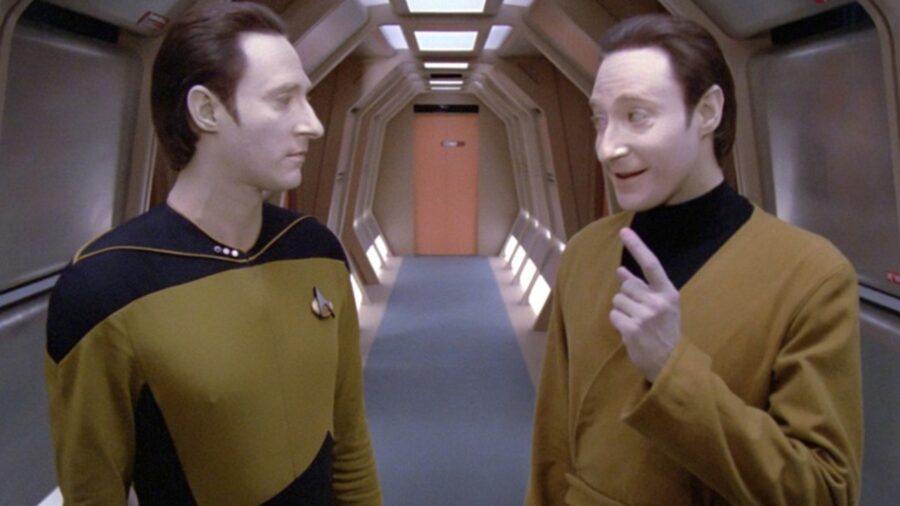
AI Isn’t Supposed To Be So Common
To understand how confusing the whole matter is, you need to remember a different kind of Star Trek AI: the Soong-Type android. The Next Generation makes a big deal out of the fact that Data is very unique because he is sentient; the galaxy is full of robotic servants, but only the androids with a positronic brain like Data could evolve into fully sentient beings, complete with emotions. In short, Data’s sentience makes him relatively unique in the galaxy, and the franchise has gone out of its way to explain that Data is special due to the genius of his creator, Dr. Soong.
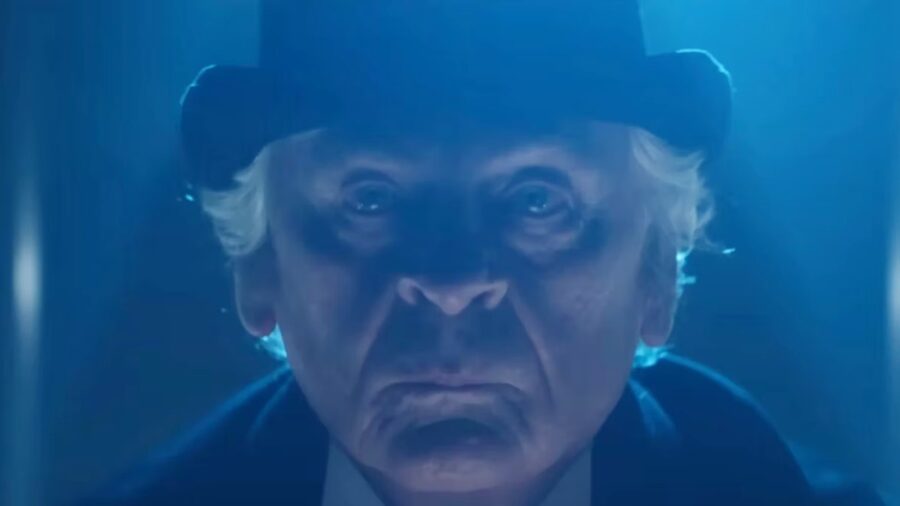
Holographic AI
While there are only so many Soong-type androids out there, Data has some kindred spirits in the form of intelligent holograms. Star Trek: The Next Generation gave us a taste of how weird AI in the 24th century could be when a simple request from Geordi La Forge resulted in the holodeck creating a sentient Moriarity. Later, Voyager would introduce a sentient Doctor hologram, and Deep Space Nine would bring in sentient lounge singer Vic Fontaine.
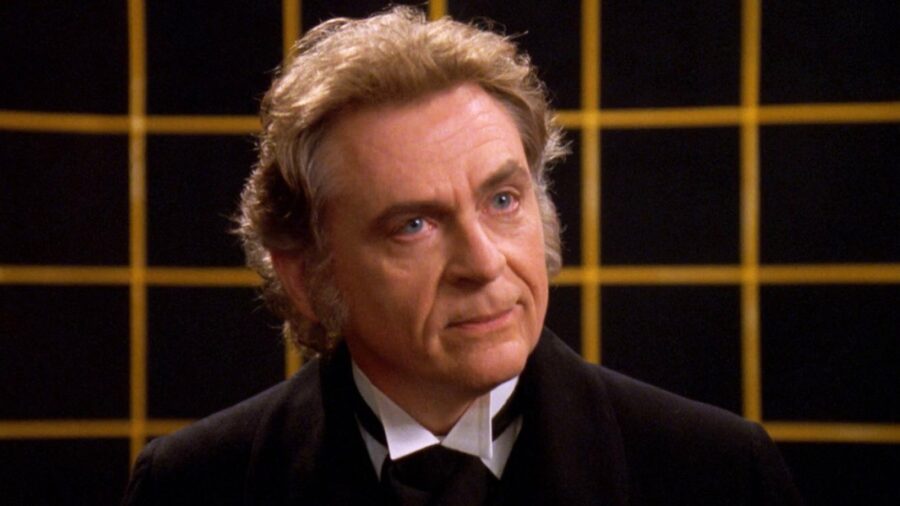
Notably, though, exactly how these fan-favorite Star Trek characters had more advanced AI than other programs is never really explained. For example, if the Enterprise-D computer can create a sentient program after receiving a vague verbal request–which is how the sentient hologram of Moriarty is created in “Elementary, Dear Data”– does that mean the ship’s computer is also sentient? For that matter, could anyone with access to the holodeck accidentally whip up a hyper-intelligent villain with the capability of putting the entire ship in danger?
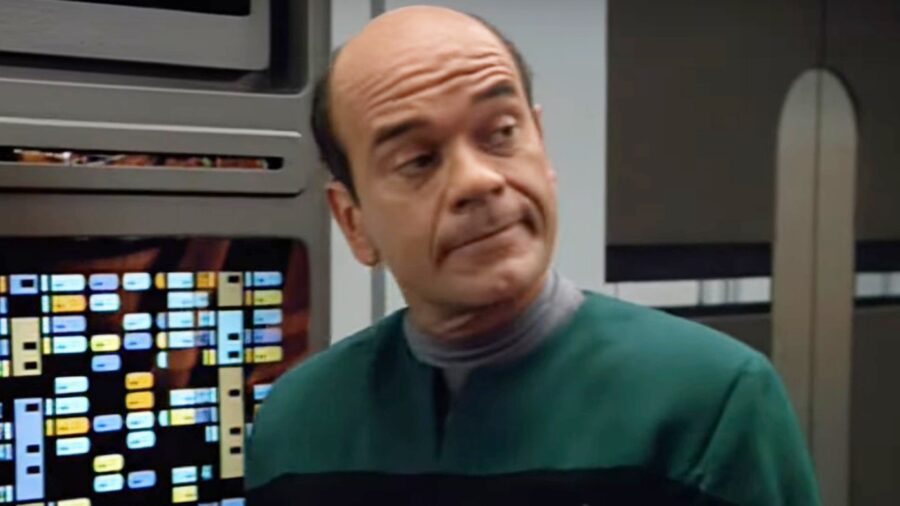
Compared to the other Star Trek holograms, we get the most info on Voyager’s Doctor, but the AI powering him is never explained. For example, it’s canonical that the EMH began the show as a short-use emergency program and just developed sentience because he was on almost all the time. Whether this would happen to any hologram that was left on for a long enough time is something the franchise never addresses.
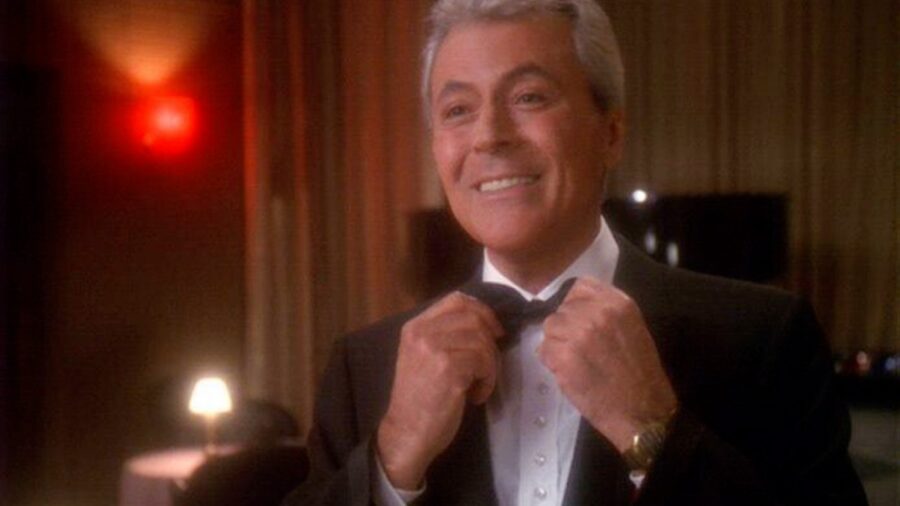
Vic Fontaine
Last but not least among Star Trek’s smart holograms is Vic Fontaine, the Vegas lounge singer whose AI was programmed by Dr. Bashir’s buddy, Felix. We don’t know much about Felix other than that he creates holo programs, and he’s obviously good at it because he intentionally made the singer sentient. If this is something a random character can do in his spare time and distribute to others, then I can’t help but wonder if the galaxy is filled with more sentient holograms than we’ll ever know.
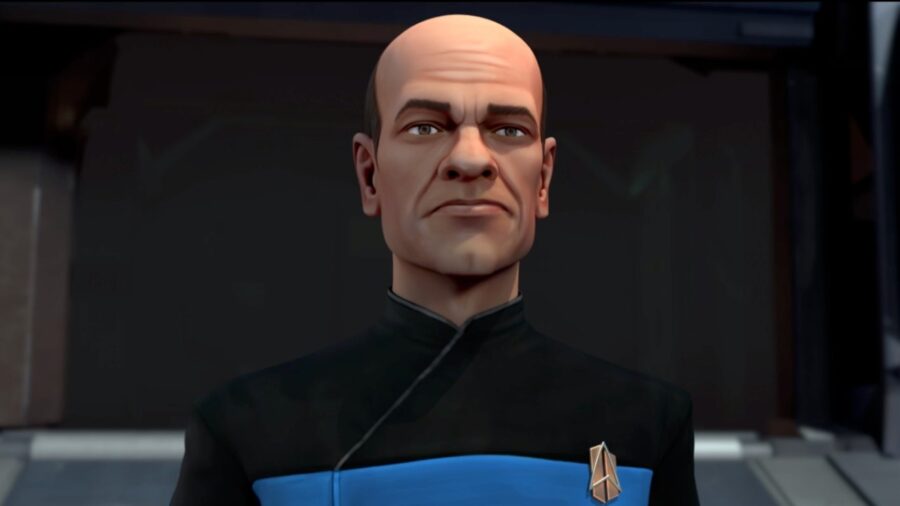
We’ll Just Have To Accept It
Star Trek gave us some great storylines featuring these characters, but it’s notable that the AI powering each hologram seems to break all the rules of the franchise. The more you wonder how these programs even achieved sentience in the first place, the more questions you’re going to have about how all of this works. Of course, this is the perfect time to remind myself of that wonderful mantra from Mystery Science Theater 3000: “If you’re wondering how he eats and breathes, and other science facts, then repeat to yourself, ‘It’s just a show, I should really just relax.”
In other words, I won’t lose much sleep if Star Trek goes another few decades without explaining this overused AI hologram trope. But for a franchise that prides itself on continuity and scientific accuracy, it’s amazing that we don’t know anything else about the origin and implications of these holographic miracles.
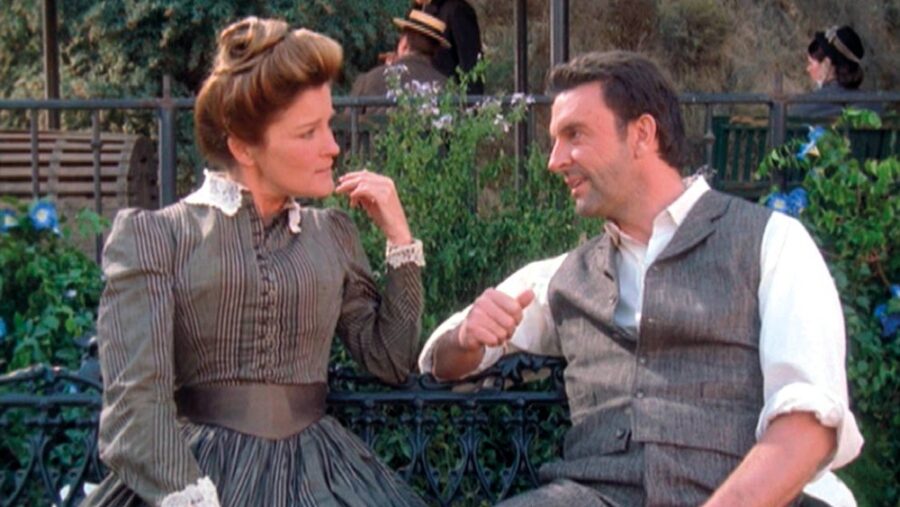
Delete The Wife
Now, I may never have an answer to the big question of whether Captain Janeway could have made that holographic bartender from “Fair Haven” sentient if she kept shacking up with him. If so, do we have to add her “delete the wife” moment to her list of kills, right next to Tuvix?
More for You
20 of the world's richest people who you might not know are LGBTQ+
Zelenskyy's team names only possible strategy to end war
7 CDs You Probably Owned, Threw Out and Now Are Worth Bank
'I know I'm going to have early onset dementia'
17 Best Shampoos for Thinning Hair That Add Incredible Strength and Volume
GOP in disarray because eight members work with Democrats: Kevin McCarthy
5 Surprising Facts About The USAF's Newest Fighter Jet Program
10 Used Android Phones You Should Avoid At All Costs
Julie Andrews and Emma Walton Hamilton, mother-daughter writing team
Carnival may follow Royal Caribbean in making huge ship move
'CSI: Vegas,' 'So Help Me Todd' canceled at CBS
39-year-old left full-time job to grow her side hustle—now she makes $279,000 a year without working 'all the time'
Nike's 2024 Paris Olympic track and field uniforms stir controversy
How Much Does It Actually Cost To Purchase A Tank?
Prague flash mob advocates Ukraine solution via the Estonian plan
Sadiq Khan taunts Donald Trump during Eid celebrations: ‘This is how we run in London’
Most extreme ‘rogue wave’ ever recorded in the Pacific
'We got it wrong': WeightWatchers CEO on weight loss
Archaeological gem Dura-Europos found to be mirror image of Iraq's Anqa
You can buy a home in France or Italy for 'the price of a new truck'—but take these 3 steps before retiring abroad

- View history
Arik Soong was a brilliant doctor of genetics in the 22nd century . He believed that Humanity 's abandonment of genetic engineering after the Eugenics Wars was a mistake and hoped to show that genetically engineered Humans would not necessarily become tyrants like Khan Noonien Singh . He argued that the source of the problem wasn't, in fact, the technology, but Humanity's own inability to use it wisely.
- 2.1 Appearances
- 2.2 Background information
- 2.3 Continuity
- 2.4 Apocrypha
- 2.5 External link
History [ ]
Soong was a descendant of Adam Soong , a 21st century geneticist and engineer who had funded Project Khan . ( PIC : " Farewell ")
Soong's mother was a chemist by occupation. ( ENT : " Cold Station 12 ")

Soong and his Augments on Trialas IV some months before he was captured in 2144
Soong was the senior medical director at Cold Station 12 in the 2130s . While there, he stole a group of Augment embryos . He later made some improvements on the embryos, and subsequently traded for goods and supplies with the Orion Syndicate so he could provide for his "children," whom he raised on Trialas IV . Soong was captured ten years later in 2144 , and imprisoned in San Francisco , where, on occasion, he attempted to escape. Once he programmed a PADD to open every security door in the prison and made it as far as Sausalito .

Soong in his cell, wearing magnetized restraints
In 2154 , Dr. Soong was "recruited" by Captain Jonathan Archer of Enterprise NX-01 to help capture his children, who had hijacked a Klingon Bird-of-Prey and killed its crew. When Archer arrived at his detainment cell, Soong demonstrated his genius. Among the reams of stacked paper on the floor and those pages pinned to the walls of his prison, all regarding DNA sequences, he highlighted research on modification of the T-cell that would cure Sharat Syndrome as well as work toward a five percent increase to the Human visual spectrum. Soong explained he was not allowed standard record-keeping equipment, due to the previous incident with the PADD. Apparently, he would make such astounding discoveries in genetic engineering only to have the papers destroyed by the guards.
When Enterprise was attacked by Orion Interceptors , the Orions abducted nine of Enterprise 's crewmembers, including Commander T'Pol . The crewmembers were taken to Verex III , to an Orion processing station where they were auctioned off as slaves . Soong was able to lead the starship to Verex III, where he used an old authorization code so Archer could enter the auction area. He helped Archer in freeing the prisoners by deactivating their neurolytic restraints . During the chaos that followed the freeing of the crewmembers, Soong attempted to escape by deactivating a subdermal transponder he had implanted in himself, but he was eventually recaptured by Archer.
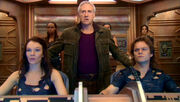
Soong aboard the Barzai
When the Augments came to talk to Enterprise , the Augment Malik took Archer hostage as the rest of the Augments broke into Enterprise 's brig and released Soong. Soong escaped Archer's custody and began his work with the Augments once again. ( ENT : " Borderland ") Soong led the Augments to Cold Station 12 , which held about 1,800 Augment embryos left over from the Eugenics Wars . He gave orders to the Augments that the capture of the station and freeing of the embryos was to be done without any killing.
Although Soong was considered a father to the Augments, he and Malik, the leader of the Augments, did not see eye-to-eye concerning the use of force. When Malik killed one of the station's personnel to get the codes to open the embryo chamber, Soong was shocked. ( ENT : " Cold Station 12 ") Soong's relationship with Malik became increasingly hostile, and Malik began to question Soong's leadership. Soong found out that the Augments intended to fire torpedoes loaded with pathogens stolen from Cold Station 12 at a Klingon colony , which they hoped would start a war between the Klingons and Humans. Conversely, Malik was upset to discover that Soong had decided to manipulate the DNA of the embryos to make them less violent. Malik removed Soong from command and had him confined to quarters.
With the help of Persis , another one of the Augments, Soong left the ship in an escape pod and was retrieved by Enterprise . Not wishing to see his children commit mass murder, he assisted Captain Archer in stopping the Augments. Afterward, Malik destroyed the Bird-of-Prey, but not before covertly beaming aboard Enterprise and attempting to kill Soong. Archer managed to shoot Malik through the torso with a particle rifle .
Soong was returned to prison to serve out his sentence and gave up his work with genetics, of which his hand-written paperwork, Archer told him, had actually been stored for posterity. He decided instead to embark on other studies, this time concentrating on artificial life , although he expected that there would not be any tangible results of his research until at least two or three generations in the future. ( ENT : " The Augments ")
In late 2154, the Klingons encountered a crisis when they attempted to create Klingon Augments by using Augment DNA left over from an Augment attack on, and destruction of, the stolen Klingon Bird-of-Prey. A plan to kidnap Soong was abandoned when the Klingons discovered that he was too heavily guarded. ( ENT : " Affliction ")
In the mid- 24th century , Dal R'El , a Human Augment hybrid , was created as the handiwork of Arik Soong's protégés through a process known as artificial hybrid speciation . Dr. Jago , a geneticist, initially described Dal as a "beautiful specimen." However, after she discovered the source of his origins, she declared that, in her opinion, his construction was "sloppy work" and that "it was a miracle [he could] talk." ( PRO : " Masquerade ")
Appendices [ ]
Appearances [ ].
- " Borderland "
- " Cold Station 12 "
- " The Augments "
Background information [ ]

A "wound" is applied to Brent Spiner's forehead, in his role as Arik Soong
Arik Soong was played by Brent Spiner , best known for playing Data on Star Trek: The Next Generation . Comments by production staff (and the casting of Spiner) indicate that Arik Soong was intended to be the great-grandfather of Noonien Soong, Data's creator (also played by Spiner). This is supported by Arik Soong's comment about cybernetics, when he said that developing an artificial lifeform "might take a generation or two." While Arik Soong writes his notes, it can be observed that he is left-handed, just like his great-grandson, and his android creations.
This character was originally to have been Colonel Green , who first appeared in TOS : " The Savage Curtain ". Manny Coto explained, " Rick Berman mentioned that Brent Spiner was interested in doing the show so we reconfigured that character for Brent Spiner. " The fact that Soong's character arc was extremely similar to the character of Green represented a problem for Coto, as he thoroughly wanted to somehow bring Green into Star Trek: Enterprise , an objective he was ultimately able to achieve by making Green's part in the series a minor one. ( Cinefantastique , Vol. 37, No. 2, p. 36)
The first name "Arik" is taken from "Borderland" and "Cold Station 12" scripts. In all three episodes in which he appears, Soong is only referred to by his surname. Arik would officially be established as his first name in the Star Trek: Prodigy episode " Masquerade ".
For a flashback in the teaser of " Cold Station 12 ", the episode's final draft script directed that Arik Soong was to look "some fifteen years younger than we have seen him – hair darker, etc."
Continuity [ ]
Arik Soong was actually correct in believing that not all genetically engineered Humans would turn out like Khan Noonien Singh. A good example of this theory was Dr. Julian Bashir , who was also genetically engineered.
Soong laid the groundwork for his descendant Dr. Noonien Soong to create the Soong-type androids , including Data . Noonien's son Altan Soong ended up working with Bruce Maddox to create the Coppelius androids , using salvaged neurons from Data.
Ironically, the intended goals of Soong's second field of study was also eventually outlawed by the Federation in 2385 , in the aftermath of the Attack on Mars , though it was subsequently lifted in 2399 .
" Farewell " implies that Soong had inherited his interest in the Augments from his ancestor Adam Soong who had funded Project Khan and appeared to take a new interest in it following his failure to interfere with the Europa Mission in 2024 .
Apocrypha [ ]
In the Star Trek: Typhon Pact novel Paths of Disharmony , the works of Arik Soong were secretly reopened as part of the Federation initiative to resolve the ongoing procreation crisis suffered by the Andorian people.
Arik Soong's mirror universe counterpart ( β ) appears in the novella " Age of the Empress ".
External link [ ]
- Arik Soong at Memory Beta , the wiki for licensed Star Trek works
- 1 Abdullah bin al-Hussein
Screen Rant
Star trek: discovery’s progenitor technology is far more powerful than wrath of khan’s genesis device.
Star Trek: Discovery season 5 is hunting for the Progenitors' life-giving technology, which has more power than Wrath of Khan's Genesis Device.
Warning: SPOILERS for Star Trek: Discovery Season 5
- Star Trek: Discovery season 5 features a treasure hunt for the powerful Progenitors' technology.
- The Progenitors' technology can create life, modify ecosystems, and possibly reanimate dead organisms.
- The Progenitors' technology is more dangerous and diverse than the Genesis Device from Star Trek II: The Wrath of Khan.
Star Trek: Discovery season 5 centers on a treasure hunt for the Progenitors' technology, which sounds even more powerful and dangerous than the Genesis Device in Star Trek II: The Wrath of Khan . Project Genesis was the 23rd-century brainchild of Dr. Carol Marcus (Bibi Besch) and David Marcus (Merritt Butrick), her son with Admiral James T. Kirk (William Shatner). Genesis was intended to address overpopulation and food shortage in the galaxy, but it was turned into a dreadful weapon by Khan Noonien Singh (Ricardo Montalban).
Star Trek: Discovery season 5 is a sequel to the Star Trek: The Next Generation episode, "The Chase," which explained why so many species in Star Trek 's galaxy are humanoid. The answer: Ancient humanoids seeded countless worlds billions of years ago, creating numerous species in their image. In Star Trek: Discovery season 5's 32nd century, the ancient humanoids are called the Progenitors, and their technology, hidden since the 24th century, must now be found by the USS Discovery before it falls into the hands of Moll (Eve Harlow) and L'ak (Elias Toufexis), who will sell the Progenitors power to create life to the highest bidder.
Star Trek: Discovery Season 5 Returning Cast & New Character Guide
Star trek: discovery’s progenitor technology powers & dangers explained, the progenitors' treasure can do more than create life.
What the Progenitors' treasure actually looks like and where it is hidden are yet to be discovered, but Commander Paul Stamets (Anthony Rapp) gave a breakdown of what the ancient technology can do in Star Trek: Discovery season 5, episode 3 , "Jinaal." The implications of the Progenitors' technology are vast . As Stamets explained to Lt. Sylvia Tilly (Mary Wiseman) and Commander Rayner (Callum Keith Rennie):
The technology… It could have incredible applications. One could use it to design new lifeforms, accelerate evolution, modify ecosystems. And if it can create life, then, in theory, it might even be possible to reanimate dead organisms… It could make even the spore drive discovery inconsequential by comparison.
The Progenitors couldn't just seed the oceans of planets to create humanoids in their image, but they could also redesign entire worlds. It's remarkable, then, that the ancient humanoids died out because the Progenitors were essentially like gods. Perhaps they warred upon and used their own technology on themselves, annihilating their species. In turn, this would explain why they left behind the message seen in Star Trek: The Next Generation 's "The Chase" and access to their technology, so that they could live on through the many species they created.
Why Star Trek: Discovery’s Progenitor Tech Is More Dangerous Than Wrath Of Khan’s Genesis Device
It's much more than Genesis.
The Progenitors' technology sounds very similar to the Genesis Device in Star Trek II: The Wrath of Khan in its implications. Star Trek II' s Genesis Device could bring a dead world to life, creating entire ecosystems and flora. The energies of the Genesis Planet also resurrected Spock (Leonard Nimoy), accelerating his rebirth to adulthood. Genesis' danger was that its matrix would replace existing life with its own , which made it a potential weapon of genocide.
The Genesis Device was seen again in Star Trek: Picard season 3, and a black market Ferengi Genesis Device was stolen and detonated in Star Trek: Lower Decks season 4.
However, the Progenitors' technology sounds more precise and more diverse than the Genesis Device. Genesis was meant to bring dead planets back to life with its set matrix but not necessarily create humanoid or other species. Project Genesis was primarily designed to create Class M planets for humanoid habitation . In contrast, it sounds like the Progenitors could create - and destroy - anything they desired with their technology, which is why it can't fall into the wrong hands in Star Trek: Discovery season 5.
New episodes of Star Trek: Discovery season 5 stream Thursdays on Paramount+

IMAGES
VIDEO
COMMENTS
Khan Noonien Singh is a fictional character in the Star Trek science fiction franchise, who first appeared as the main antagonist in the Star Trek: The Original Series episode "Space Seed" (1967), and was portrayed by Ricardo Montalbán, who reprised his role in the 1982 film Star Trek II: The Wrath of Khan.In the 2013 film Star Trek Into Darkness, he is portrayed by Benedict Cumberbatch.
Khan Noonien Singh (or simply Khan) was an extremely intelligent and dangerous superhuman.He was the most prominent of the genetically-engineered Human Augments of the Eugenics Wars period on Earth.Khan was considered, by the USS Enterprise command crew, over three centuries later, to have been "the best" of them. Reappearing with a cadre of Augment followers in the 23rd century, Khan became a ...
Dr. Noonian Soong is in fact linked to Khan. Dr. Soong's great grandfather Arik Soong created the Augments (a second attempt at the kind of super beings led by Kahn) and played a vital role in the Eugenics Wars. Khan's name is a bastardisation of Soong's name, but Kahn is (in a weird kind of way) Noonian Soong's great great uncle.
One theory that could work is that La'an was created by a loyalist group of Augments who took on the Noonien-Singh name to show their allegiance to Khan. La'ana's presence on the Enterprise ...
WARNING: This article contains spoilers for Star Trek: Strange New Worlds, season 2, episode 2, "Ad Astra per Aspera." Star Trek: Strange New Worlds has added new layers to the history of Star Trek: The Original Series' genetically enhanced tyrant Khan Noonien Singh (Ricardo Montalban) proving that the character still has a lasting influence on Star Trek decades after his first appearance.
In the "Star Trek" episode "Space Seed" (February 16, 1967), the Enterprise rescues Khan from a cargo ship called the Botany Bay. Khan and several of his compatriots were in cryogenic sleep ...
by Eric Diaz. May 5 2022 • 9:00 AM. On the season two finale of Star Trek: Picard, modern-day scientist Adam Soong (Brent Spiner), while going through his desk in a mad rage, discovered a manila ...
Khan Noonien Singh is an important villain in Star Trek, and those who don't already know his story are in for an incredible adventure. The character has a long history in the nearly 60-year-old saga, and he remains important to its past and future. Originally appearing in the Star Trek: The Original Series Season 1 episode, "Space Seed," the ...
In recent "Star Trek" shows, ancestors of Dr. Soong began to emerge. The mystery of Data's creator was solved by a long-running intergenerational obsession that actually stemmed from unsavory ...
Classic Star Trek villain Khan Noonien Singh (Ricardo Montalbán) has had a long-lasting legacy that continues into the current canon. Decades after he died in one of the best Star Trek films ...
History []. Soong was the designer of at least six Soong-type androids: Data, Lore, B-4, and a recreation of his wife Juliana, as well as two prototypes.He was a descendant of 22nd century criminal geneticist Arik Soong, who started work in cybernetics that his descendants, down to Noonien, continued.An associate of Ira Graves, as well as a star scientist of the Federation in his own right ...
Star Trek: Prodigy's Dal R'El (Brett Gray) always knew he was different, and it was revealed in the episode "Masquerade" that he was genetically augmented. Engineered by scholars of Dr. Arik Soong (Brent Spiner), Dal contained the genetic code of 26 different Star Trek species. In "Masquerade", Dal's dormant genes were activated by an implant ...
StarTrek.com highlights one of Star Trek's most notorious villains, Khan Noonien Singh. Related. The Epic Voyage of Star Trek: The Cruise VII. Star Trek Universe. 03:07. Happy International Women's Day from the Women of Star Trek. Star Trek Universe. 03:20. Day 6 and 7 of Star Trek: The Cruise VII.
Star Trek: Picard doesn't elaborate on the nature of "Project Khan," nor the extent of Adam Soong's involvement within it. The folder does, however, raise the prospect of Adam Soong possibly being involved in Khan's creation.In established Star Trek canon, Khan was active on Earth throughout the 1990s (it's feasible Soong could've been on the original eugenics team - especially if he's ...
Ricardo Montalban as Khan Noonien Singh in Star Trek II The Wrath of Khan (1982). ... set out to prove that Augments wouldn't automatically grow up to be bad 'uns like Khan. Soong's work was later ...
Project Khan was the code name of a late 20th century project involving the creation of augmented Humans. One of the scientists who worked on the project was Adam Soong. This project resulted in the creation of individuals much like Khan Noonien Singh and other genetically-enhanced people, which was one of the causes of the 1990s Eugenics Wars. The project began on January 2, 1992, which would ...
From Khan to Soong, Star Trek, a show that celebrated technological advancement, challenged the promises of the rapidly developing science of genetic engineering. As the debate over cloning ...
In Star Trek: Picard fans were introduced to yet another Dr. Soong who happens to look just like Data (or, more accurately, Brent Spiner the actor who played him). In the last scene we see of this character in the past, he's holding a file called "Project Khan" dated 1996. While it might seem like a quick reference to Star Trek's most infamous villain, it may actually be the first step ...
Noonien Singh/Noonien Soong explanation. Rewatching TOS and TNG I was struck by the similarity in names between the Khan (whose last name is Noonien Singh) and Dr. Noonien Soong, the scientist who built Data in TNG centuries later. Given the differences in last name spelling, I'd assume these two aren't related, though given the time ...
In the 22nd century, Dr. Arik Soong came across Captain Jonathan Archer (Scott Bakula) and the NX-01 Enterprise crew in Star Trek: Enterprise season 4, and Arik had taken up the twisted mantel of his ancestor, Adam Soong.Star Trek: Picard season 2 revealed that Dr. Adam Soong possessed a file entitled Project Khan, the genetic engineering protocol that led to the creation of Khan Noonien Singh ...
The Soong family consisted of generations of scientists, including some of the greatest geneticist and cyberneticist minds of their time on Earth and later in the United Federation of Planets. For several Soongs, their work resulted in non-traditional beings the Soongs considered their children. In the 21st century, Dr. Adam Soong was a geneticist in Los Angeles. (PIC: "Fly Me to the Moon ...
What I know about Star Trek would fit onto a very small data crystal, and still leave plenty of room. So I enlisted some friends to help me identify the ships and with their help, we've managed to identify all but three, which happen to be Dominion ships from the Khan expansion. Here they are, labeled A, B, and C for easy reference: Keep in ...
The fear of eugenics creating a villain like Khan is an old idea Star Trek is exploring once more, as Adam Soong's "Project Khan" hints. Part of Star Trek's continuing obsession with Khan is because of the franchise's difficulties in creating other great supervillains. Even the Borg Queen (Annie Wersching/Alison Pill) was redeemed in Star Trek ...
To understand how confusing the whole matter is, you need to remember a different kind of Star Trek AI: the Soong-Type android. The Next Generation makes a big deal out of the fact that Data is ...
Arik Soong was a brilliant doctor of genetics in the 22nd century. He believed that Humanity's abandonment of genetic engineering after the Eugenics Wars was a mistake and hoped to show that genetically engineered Humans would not necessarily become tyrants like Khan Noonien Singh. He argued that the source of the problem wasn't, in fact, the technology, but Humanity's own inability to use it ...
In Star Trek: Picard, Dr. Altan Inigo Soong (Brent Spiner) built far more androids than his father Dr. Noonien Soong.For generations, the Soong family was interested in cloning and genetics, until Arik Soong switched to researching synthetic life while in a United Federation of Planets prison in Star Trek: Enterprise.It was not until Dr. Noonien Soong, in the 2330s, that the family's research ...
Star Trek: Discovery season 5 centers on a treasure hunt for the Progenitors' technology, which sounds even more powerful and dangerous than the Genesis Device in Star Trek II: The Wrath of Khan.Project Genesis was the 23rd-century brainchild of Dr. Carol Marcus (Bibi Besch) and David Marcus (Merritt Butrick), her son with Admiral James T. Kirk (William Shatner).